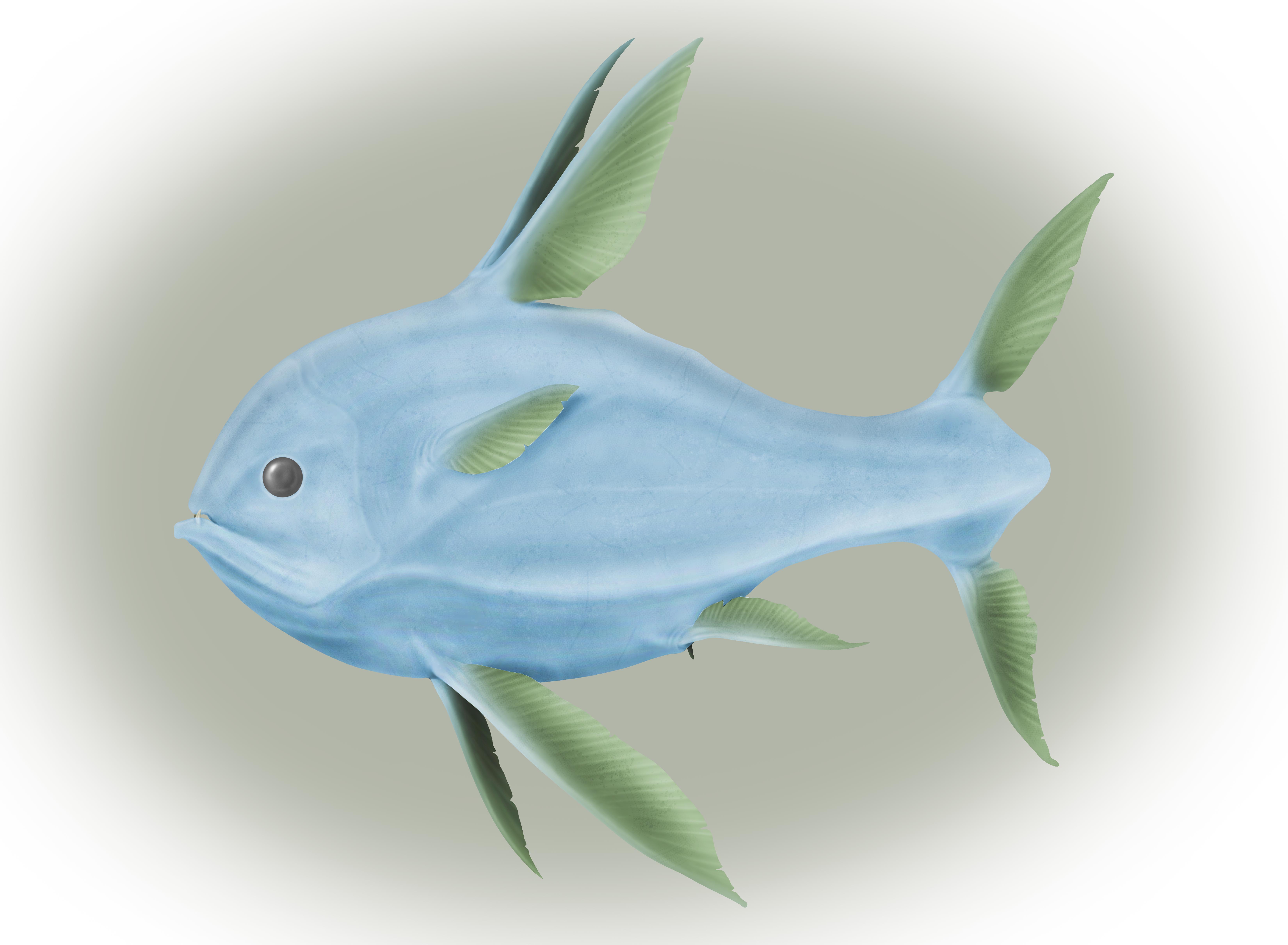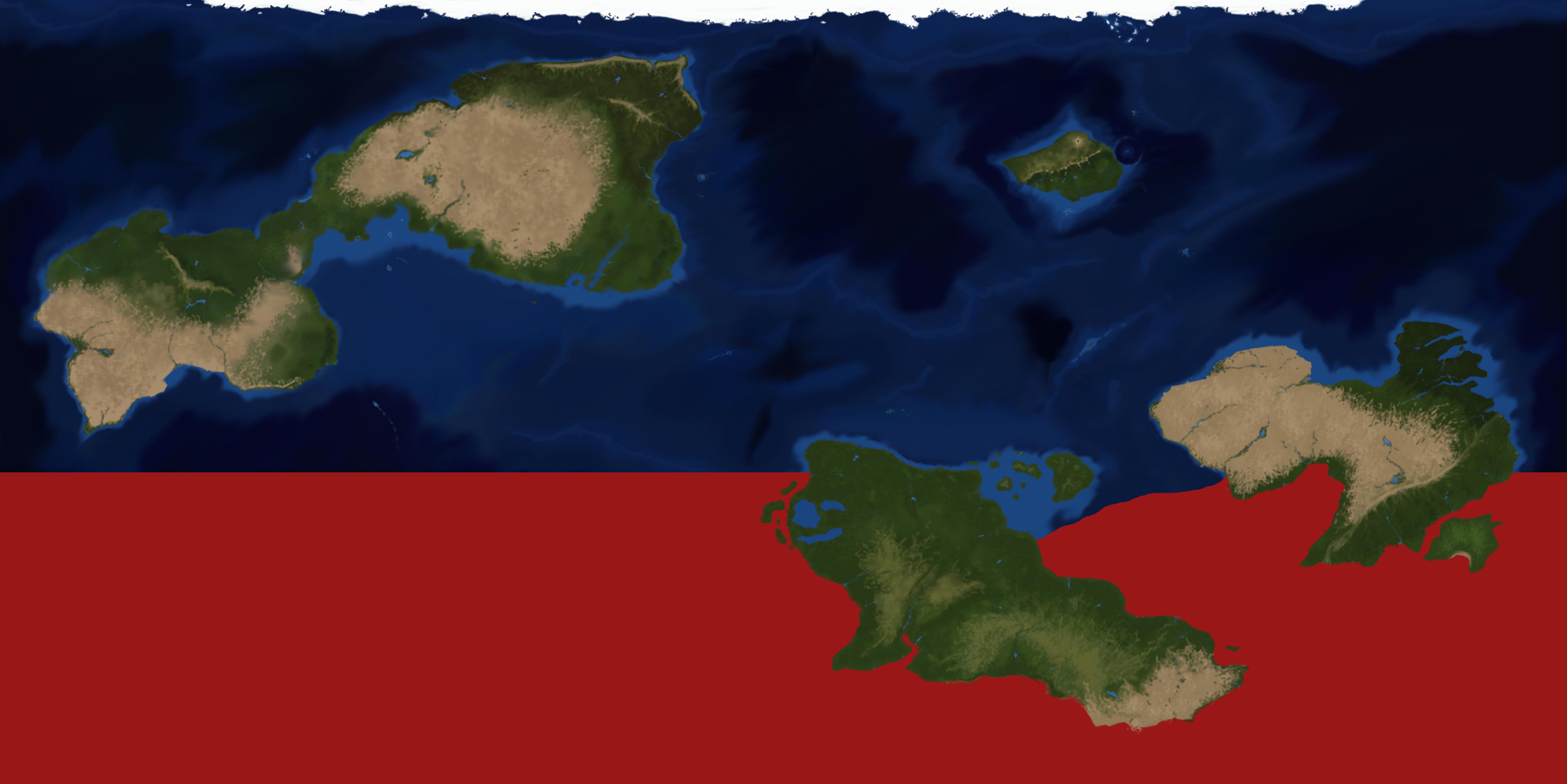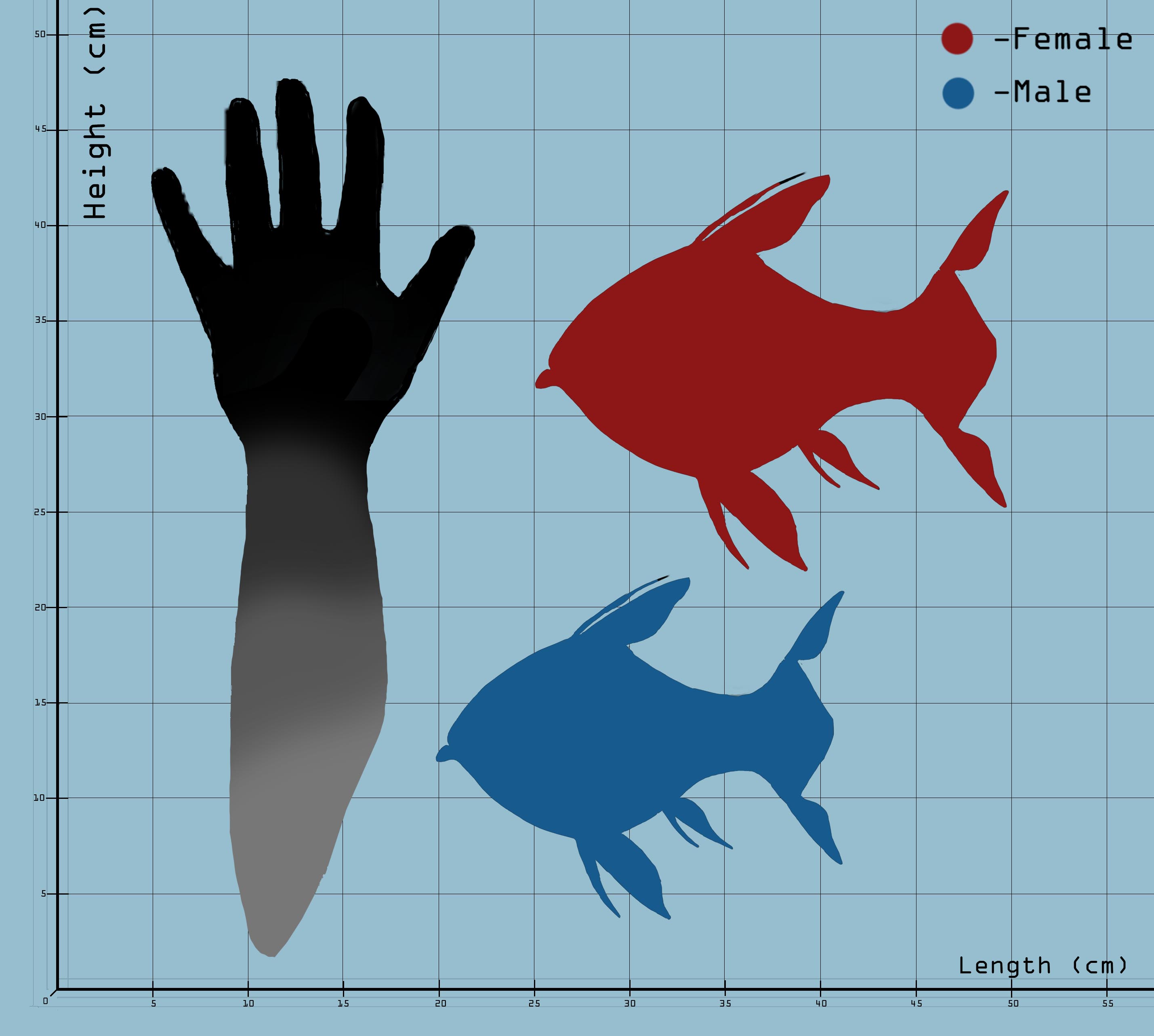Javelin Flapper
Fraxinichthys robusta is a common inhabitant of the southern Oceans.
As its close cousin, the Common Flapper , this specialized family of pelagic dwellers lives only in the southern oceans keeping separated from their sister taxa in the northern emisphere.
F. robusta evolved a poison which covers its skin, warning predators of its presence through the colorful fins; its poison induces strong spasms that temporarly stops the predator in its tracks, giving the rest of the school the time necessary to flee to safety.
As they are not immune to their own poison, the single F. robusta that is bitten will most probably suffocate alongside the supseptible predator who bit it.
This animal possesses a couple of big and resistent canines jetting out of the dentary; these specialized teeth are used by the amphibian to crush plant's armors and get access to the soft insides.
In the year 2503, various unhealthy populations of this fish were reported off the coasts of new japan, possibly intoxicated by the pollution produced by the neo japanese industries, which were pouring enormous quantities of heavy metals and polluting agents into the ocean.
Basic Information
Anatomy
- Rounded overall body with softer Dorsal and Abdominal arches than its cole cousin, the Esavelis.
- Rounded black eyes; mouth small with two bigger extruding canines jetting out of the dentary.
- Armor completely reabsorbed.
- Pectoral fins atrophied and roundedspear shaped; Dorsal fin coupled and elongated, at the edge of the dorsal arch. Anal I on the midpoint of the abdominal arch, Anal II positioned near the base of the Gill tail.
- Presence of caudal fins although atrophied and of little use during locomotion.
- Gill tail Thicker than in other members of the family; Gill fan with very high ridges and steep caudal drop.
Genetics and Reproduction
Polygamous.
Both sexes enter heat every three months.
Males will enter an active state for two and a half weeks with the swelling of the parapenial sac and of the Filtration sac; during this phase, like in most other Selenopiscoidea, the parapenis will be to swollen to retract inside the sac.
Females will enter an active state for three weeks with abundant mucous production in the Egg ducts, leading to leakings.
The usual mating environmet for the species are shallow waters with bush-like aquatic plantlife with broad leaves.
No known order on mating priority has been described as of writing.
Very few and sparse mating rituals, mainly a few dances here and there and the nibbling of the pectoral fins; copulation takes seven minutes.
The females will incubate the eggs in the ducts for six days and will lay fourty to fourty-five eggs each.
The eggs are laid in the underside of leaves and the shoal will leave shortly after.
The eggs hatch after twenty days; the spawn will feed on phytoplankton they find inside the bush they're sheltering in.
Growth Rate & Stages
Ontogenesis in the spawns not incredibly marked.
Loss of the natal aculeus at two weeks of age.
Ecology and Habitats
They are Epipelagic, living between 0 and 50 m deep.
they are much more sedentary than its cousin.
Dietary Needs and Habits
These are herbivorous animals with a diet mainly based on armored plantlife they break with their canine teeth.
During their growth, Fraxinichthys robusta will change their diet starting from phytoplankton and moving to soft buds and plants.
Biological Cycle
Fraxinichthys robusta will remain hidden in the bushes they were born in for the first one week of life.
They will change their diet gradually during growth; starting by filtering phytoplankton from the water, then passing to soft plants of the bush and slowly making hteir way to the armor crushing behavior their most known for.
They'll leave the bush after three to four months from hatching and will follow the seafloor deeper until they eventually come across an armored forest.
Additional Information
Social Structure
Fraxinichthys robusta is a very social animal.
This amphibian lives in schools of dozens of specimens with high social interactions.
An average school of thew species will have around three sentry members who will scout the area around the conspecifics for predators; they are skittish toward humans and wont let divers come close.
Fraxinichthys robusta posesses a poison under the skin that induces spasms in whoever bites into them; if under attack one of the members gets bit, the poison will slow down the predator or outright suffocate it by impeding water flow inside the Gill fan; this animal is not immune to its own poison so its probable that the member that got bit alongside the predator.
Although this is optimal to keep away threats, there are a few predators who specialized hunting them and are not affected by the poison.
Domestication
Kept in home aquariums, these animals are less popular than other members of the family and are of lesser commercial value as a result.
Uses, Products & Exploitation
Of commercial use in the pet trade.
Main human application is the poison, which has been used in medicine.
Geographic Origin and Distribution
Southern hemisphere from the Nuwadi Ocean to the Irobian Ocean; mainly in shallow waters where plenty of low depth armored forests grow.
Perception and Sensory Capabilities
This species relies on sight and on chemical receptivity.
Symbiotic and Parasitic organisms
Subject to Intestinal Tube Worms and respiratory parasites.
Scientific Name
Eoichthyia; Tartarosomnia; Rotunducephalidae; Gladiopinneoidea; Qadratocephaloidea; Selenopiscoidea ; Esavelidae; Fraxinichthys; F. robusta
Lifespan
6 years
Conservation Status
LEAST CONCERN: No measures underway to protect the species.
Population trend: STABLE
Average Weight
100 to 300 gr
Body Tint, Colouring and Marking
Azure body tint with bright green fins.
Remove these ads. Join the Worldbuilders Guild












Comments